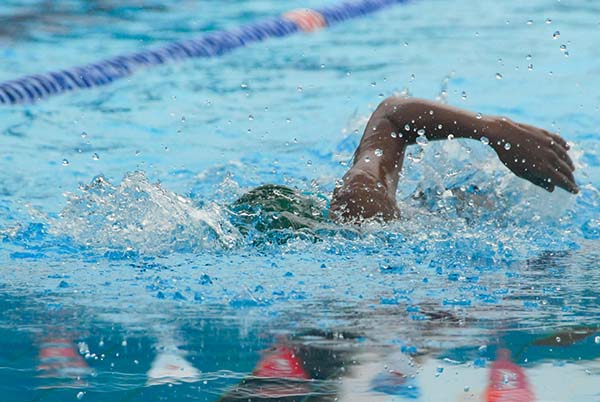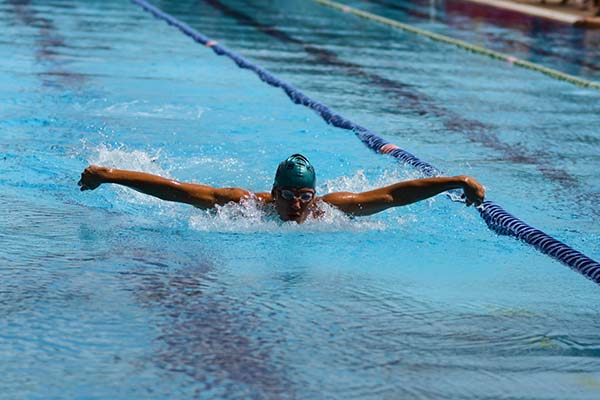Swimming is such a great way to work out! It really gets your heart racing but is easy on your joints, which is awesome for anyone wanting to stay active without the usual soreness that comes with other exercises. Whether you’re just starting out or you’re a pro swimmer, there’s a ton of strokes and speeds to check out to hit your fitness goals. So, how many calories does swimming burn? Let’s take a look.
The Road From 50 Meters to 1 Kilometer
When I kicked off my freestyle swimming journey, I was super excited to swim 50 meters without feeling like I just sprinted a marathon! I totally remember gasping for air, hanging onto the edge of the pool, and questioning how people could swim lap after lap just for fun. But I kept at it. I really focused on my technique, and before long, just a month later, I was swimming 1 kilometer without stopping! This experience showed me just how many calories I was burning and how swimming stacks up against other workouts.
Swimming is fantastic for burning calories, but it’s definitely not a one-size-fits-all deal. Your weight, how hard you’re swimming, and your stroke style all play a part in how many calories you burn in the pool. Let’s dive into those details.

How Many Calories Does the Average Person Burn While Swimming?
Swimming is often praised as one of the best full-body workouts, and for good reason. Not only does it improve endurance and build muscle, but it also burns a surprising amount of calories. On average, a person swimming at a moderate to high intensity will burn 200 to 300 calories in just 30 minutes. That’s roughly the same as running three miles, but with less impact on your joints.
Of course, the exact number depends on factors like body weight, swimming style, and intensity. Here’s a general estimate of calorie burn per 30 minutes in the pool:
- 130 pounds (59 kg): about 180–240 calories
- 155 pounds (70 kg): around 210–280 calories
- 185 pounds (84 kg): about 240–330 calories
Swimming gets easier as your technique improves, but you can maintain a strong calorie burn by using your increased endurance to swim for a longer duration or at a higher intensity.
Intensity Levels: Going from a Light Swim to All-Out Sprints
Swimming intensity is another big factor. If you’re taking it easy, you’ll burn fewer calories than if you’re going all-out. Let’s compare a gentle lap swim with a vigorous, fast-paced session:
- Light/moderate swimming: Around 200–300 calories per hour
- Vigorous swimming (like sprints): 500–700 calories per hour
When I started swimming regularly, I naturally fell into a moderate pace. I didn’t have the stamina for sprints right away, but once I did, the difference was noticeable. Just by adding a few 25- or 50-meter sprints into my routine, I could feel my heart rate soaring, and I knew my body was working harder. Mixing in high-intensity intervals is a great way to keep your calorie burn high.

Calorie Burn by Swimming Stroke: Which Burns the Most?
did you know that different swimming strokes can burn different calories? Crazy, right? Each stroke works out different muscles and requires different energy levels. So, here’s a quick look at how many calories someone who weighs 155 pounds (or 70 kg) can torch while swimming at a chill pace:
- Freestyle: 300–400 calories an hour
- Backstroke: 250–350 calories per hour
- Breaststroke: 400–500 calories an hour
- Butterfly: 600–800 calories per hour
I kicked things off with freestyle because it’s awesome for building stamina and you burn a solid amount of calories. But if you want to really maximize those calorie burns, give butterfly a shot. I’m still working on mastering it; it’s pretty tough! But damn, you can feel all your muscles engaging when you go for it.
The Afterburn Effect: Keep Burning Calories Even After Swimming
One of the coolest things about swimming is that it doesn’t stop burning calories once you hop out of the pool. Going hard can lead to this thing called excess post-exercise oxygen consumption, or EPOC. Basically, you keep burning calories even after you’re done swimming! This “afterburn effect” really adds up, especially during high-intensity workouts or interval training.
For example, after a tough swim session, I usually feel like my body’s still in overdrive for a few hours. I get hungrier, my heart rate’s a bit up, and it seriously feels like my metabolism is on fire!is running faster. This is one of those hidden benefits of swimming that makes it such an effective workout.

Comparing Swimming to Other Cardio Exercises
So, swimming is a solid way to burn calories, but how does it compare to other cardio workouts? Here’s a quick rundown of calories burned in 30 minutes at a moderate to high intensity for someone who weighs around 155 pounds:
- Swimming (freestyle): 210–280 calories
- Running (5 mph / 8 km/h): 295 calories
- Cycling (12–14 mph / 19–22 km/h): 260 calories
- Rowing: 210–250 calories
Yeah, running can torch more calories, but swimming is usually kinder on your joints. Personally, I enjoy swimming more than running because it’s refreshing and doesn’t put so much pressure on my knees and ankles. Plus, it’s a full-body workout, so you’re burning calories not just in your legs but everywhere.
Tips to Boost Your Calorie Burn When Swimming
If you want to crank up the calorie burn while you swim, here are some tips that work for me:
- Switch Up Your Stroke: Trying different strokes keeps things fun and targets various muscle groups, which means more calorie burn overall.
- Add Some Intervals: Mix in periods of high-intensity sprints followed by slower swims. You’ll burn more calories during your session and even after you’re done.
- Work on Your Technique: Being efficient means you can swim longer and burn more calories over time. When I paid attention to my form and breathing, I could swim further without totally wiping out.
- Use Some Gear for Resistance: Tools like kickboards, paddles, or fins can give you that extra challenge, just be sure to use them properly to stay safe.
- Swim in Colder Water: Believe it or not, cooler water can make your body work harder to stay warm, giving your calorie burn a little boost.
Swim Smart, Burn Calories, and Have Fun
Swimming really is one of the best full-body workouts, and it has a great calorie-burning potential, especially with the afterburn effect and how easy it is on your joints. If you’re just getting started, like I was, stick with it! Even if you can only swim a little at first, you’ll get better with time. Remember, it’s not only about the numbers, it’s about finding a workout you love and feel great doing. So dive in, have fun, and watch those calories go!





